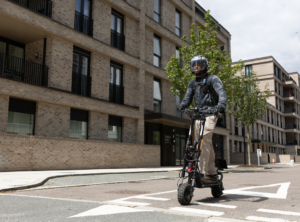
When it comes to bicycle insurance, getting the value right is essential. This guide explains how to value your bicycle for insurance accurately, whether it is brand new, custom-built, vintage, or fitted with bicycle upgrades.
We’ll also cover how to include accessories in your bicycle insurance. Plus, we’ll explain how to avoid underinsurance, ensuring you’re protected when it matters most.
Start with the Price You Paid
For most cyclists, the correct bike valuation is the price you paid for it, whether new or second-hand, with no depreciation. This figure should include all components permanently fitted to your bike, such as pedals and power meters.
Many providers reduce a bike’s insured value after three years, but we do not. We believe this does not reflect the real-world cost of replacement. The price you paid is the price we insure it for.
When the Value May Differ
There are situations where your insured value might be different from the amount you originally paid.
Discounted bicycles
If you bought a bike new with a significant discount from an approved retailer, you can insure it at its recommended retail price (RRP) shown on the receipt. This ensures that if the same discounted model is no longer available, you are covered for the true value.
Vintage or antique bicycles
For bicycle insurance for vintage and antique bikes, you may find your bike’s value has increased. In these cases, we will need a valuation from a suitably qualified expert, such as a specialist retailer, carried out within the last three years.
Custom-built bikes
If you are insuring a custom-built bike in the UK, the insured value will be the total cost of all individual parts. Your primary wheelset is included in the bike’s value, while additional wheelsets are listed separately.
Accessories and Additional Equipment
Cycle accessories cover applies to items that are not essential for riding and are not permanently attached. Examples include cycling computers, clip-on bars, or carbon bottle cages. These are not included in the bike’s insured value but can be added to your policy as an additional cover for protection against theft or accidental damage when they are with your bike.
If you train with power, remember:
-
A fixed power meter is part of your bike’s value.
-
Power meter pedals used on multiple bikes should be included with the bike they are most often used on.
Upgrades Matter
When calculating bicycle upgrades, include the cost of any upgraded parts such as wheels, stems, or handlebars in your bike’s valuation.
Examples:
-
Sophie’s BMC TeamMachine (£2,000) + Ultegra pedals (£115) + Stages power meter (£350) = £2,465 insured value.
-
Will’s custom cargo bike = sum of all parts purchased.
-
Tom’s Trek Emonda (£1,500) + upgraded wheels (£500) = £2,000 insured value.
Documentation Helps
Keep receipts and a recent photo of your bike. This can make the claims process quicker and smoother.
Avoiding Underinsurance on Your Bike Policy
You must insure your bike for its full value. Partial cover to lower premiums is not allowed. If you under-insure, any claim may be subject to a proportional reduction.
Example:
If you insure your bike for £2,000 but it is worth £4,000, you have insured only 50% of its value. A claim for £1,000 on a new wheelset would be reduced by 50%, meaning you would receive £500.
Key Points to Remember
-
Include all fixed components and major upgrades in your valuation.
-
Accessories can be covered separately under cycle accessories cover.
-
Keep receipts and recent photos.
-
Insure for the full value to avoid proportional claim reductions.
If you are unsure or need some clarity on this then please feel free to get in touch with the team.
eavi – Insuring The Future



